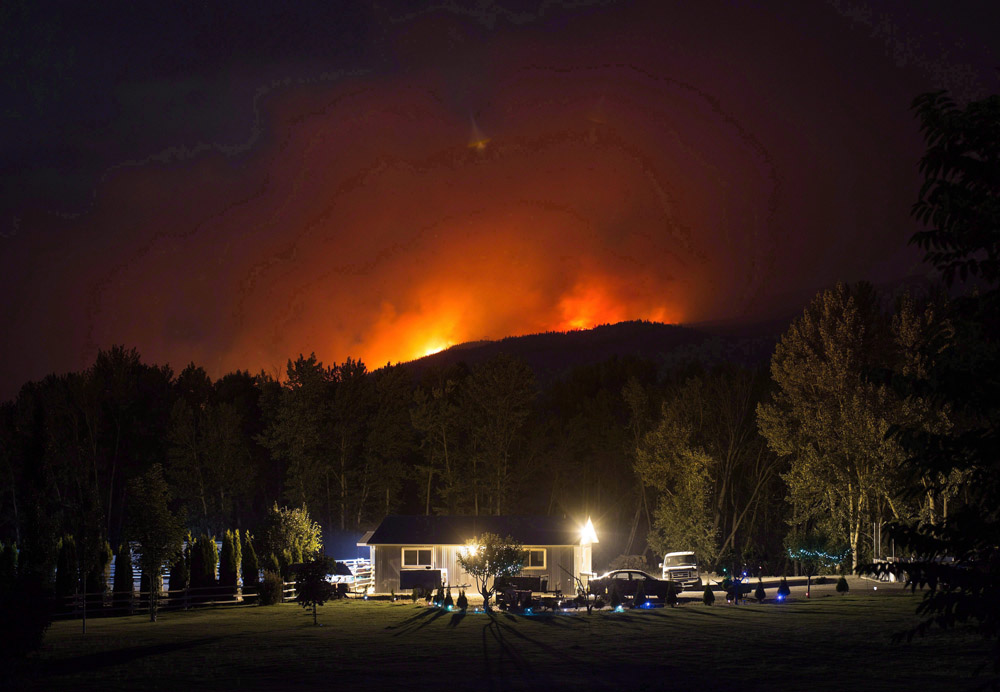“Unreliable” radios reduced the effectiveness of troops helping fight wildfires in British Columbia last year, documents released to Global News show.

Troops resorted to using their personal cell phones, but often found themselves in remote areas with no coverage as mountainous terrain and long distances made military VHF radios “unusable,” an internal assessment of the operation cautioned.
Satellite phones “did help, but there were not enough of them and they did not always work.” A communication system, used in B.C. for the first time, “only provided a fraction of the bandwidth required to communicate with higher headquarters.”
Last year, 2017, was the worst year for wildfires in B.C.’s history. The fires forced 65,000 people to leave their homes, and led the province to declare a 10-week state of emergency.
The comments were made in an “after-action report,” a document the military produces after an operation to work out what problems were encountered and what should be done about them.
“The communications plan would have failed if contracted civilian support had not been available,” the report said.
By early September of last year, about 800 troops were involved with the B.C. wildfire operation, which the military called Operation Lentus. (The name gets recycled for all disaster relief operations.) They were involved with delivering aid and firefighters to remote areas, and evacuating residents.”

Some communications equipment was “sent without verification of serviceability — … some equipment was deployed with missing hardware or software, and were in some instances not serviceable.”
The report said that satellite-based radios should be used in future.
“The Canadian Armed Forces is in the process of purchasing new communications systems to best support operations in a variety of environments, including future Operation Lentus,” spokesperson Capt. Valérie Lanouette wrote in an e-mail in response to our questions.
While not as catastrophic as 2017, 2018 is a difficult year for wildfires in B.C. There are over 450 burning across the province, with firefighters arriving from as far away as Mexico and New Zealand.

The document, circulated internally within the military in mid-December, was released to Global News under access-to-information laws.
Among the other comments:

Get daily National news
Solders preferred pickup trucks to armoured vehicles. Pickups “made the troops blend in more with the local population, allowing for a more peaceful optics/approach when dealing with aggressive locals. The (light armoured vehicle) has an intimidating posture which promotes an aggressive posture when dealing with locals.”
The reference to “aggressive locals” referred to “residents frustrated or upset about the need to remain away from their homes due to evacuation orders,” Lanouette wrote; the aggression wasn’t directed against troops.
However, soldiers observed that “the use of a civilian pattern vehicle potentially aided in de-escalating situations, as an armoured vehicle presented an imposing presence and sent the wrong message to affected persons who were already in a vulnerable state.”

The Kamloops armoury was too small. “Limited working office space … limited showers, no accommodations and the lack of food services facilities make it difficult to operate from this location.” This, it was argued, would make it difficult to use during similar operations in the future, or for Operation Panorama, the relief effort that would follow a catastrophic West Coast earthquake.
Military ambulances were unreliable,”frequently (not serviceable) and unable to keep pace within convoys. … (Ambulances) were used only for non-urgent transport and static medical support. Civilian EMS were relied on to transport any serious patients.”
The military has since bought 16 civilian-pattern ambulances, four of which have been sent to Edmonton and would be available for future B.C. wildfires, Lanouette wrote.
Troops staffing a command centre “displayed … a notable lack of experience.” (Part of this section of the report is censored under a section of the access to information act that allows officials to withhold “information the disclosure of which could reasonably be expected to be injurious to the defence of Canada.”)











Comments